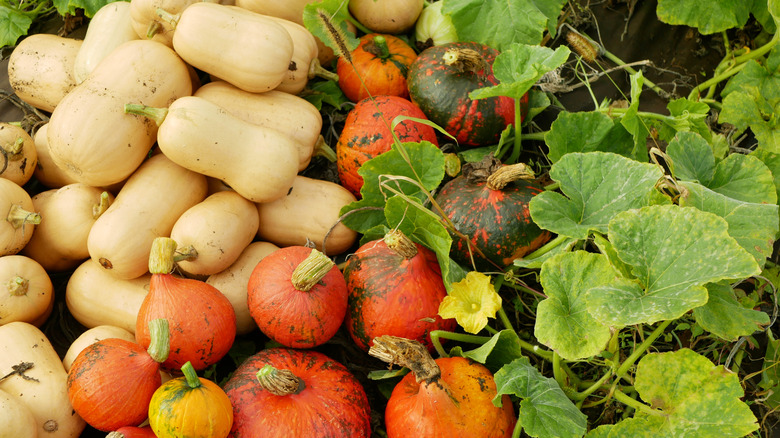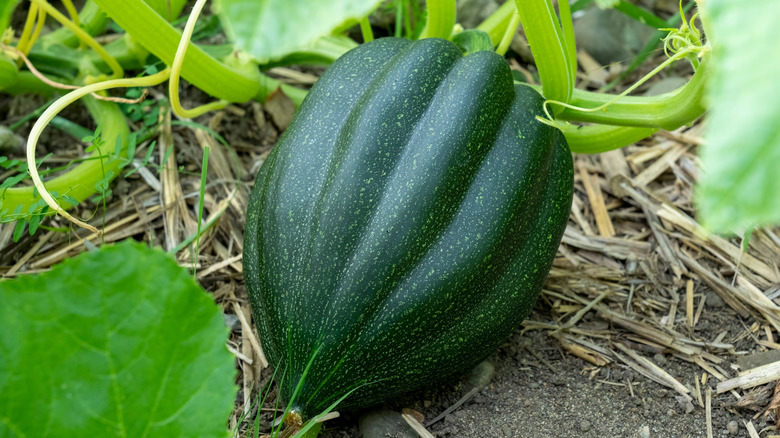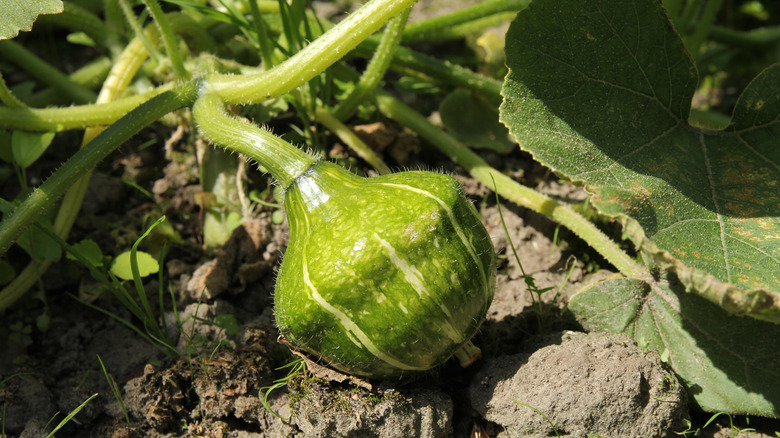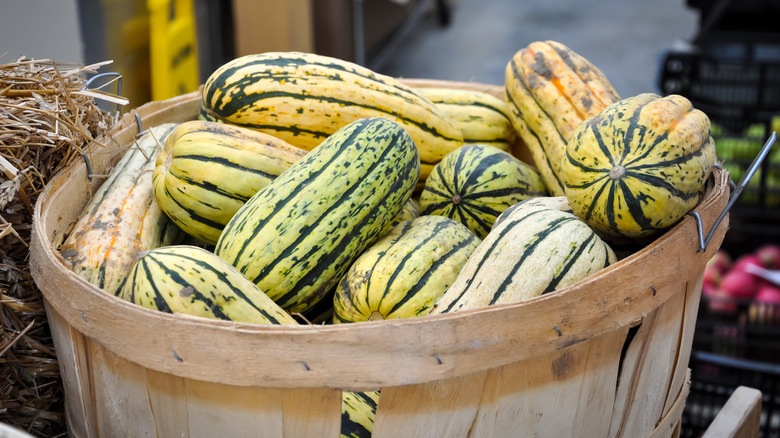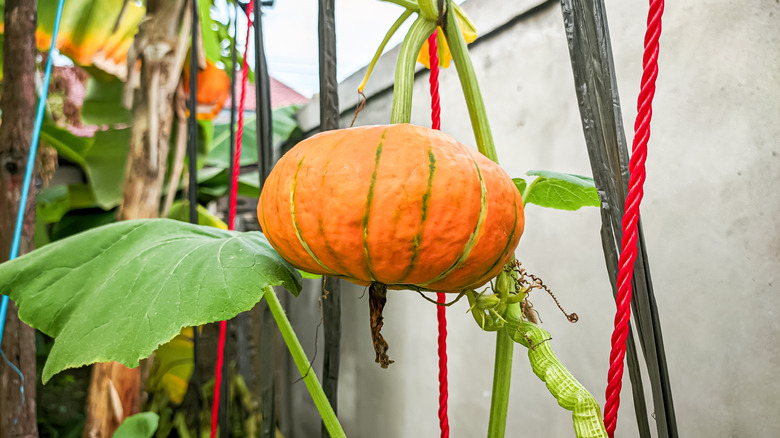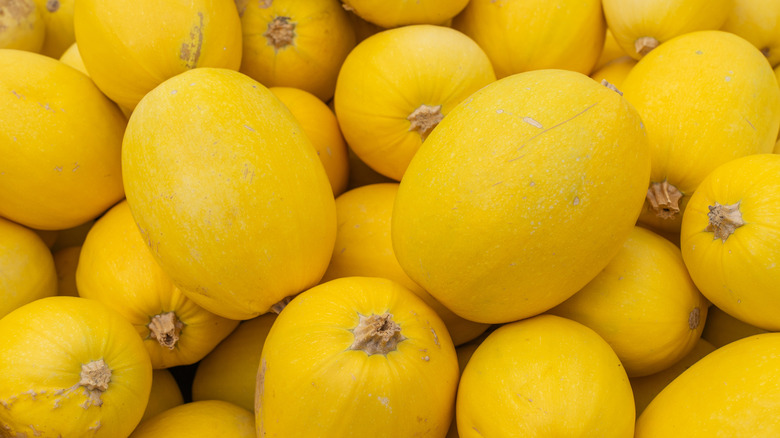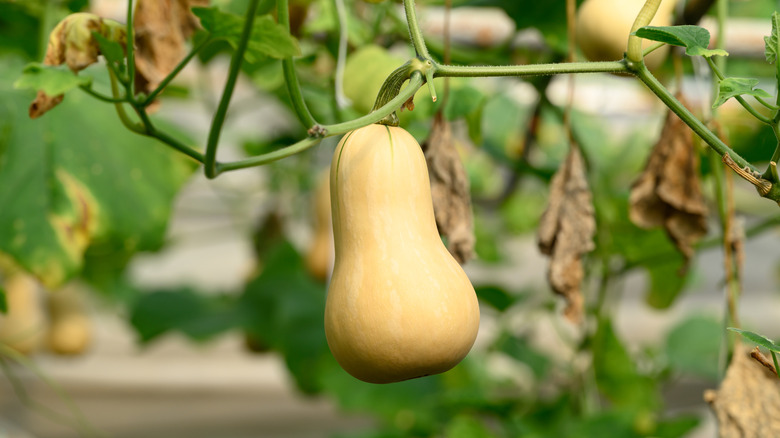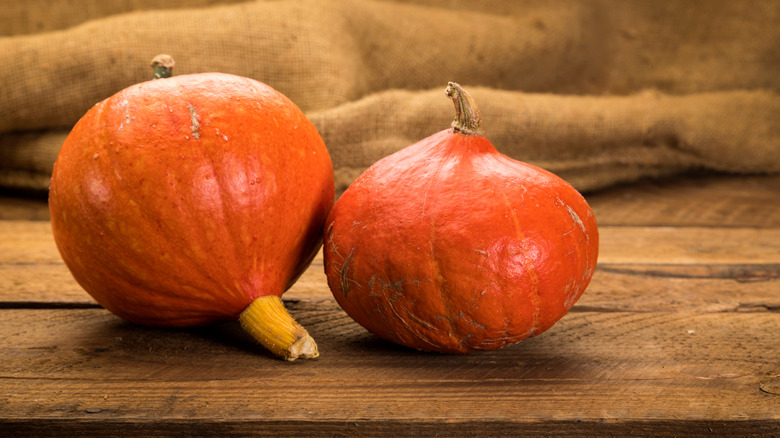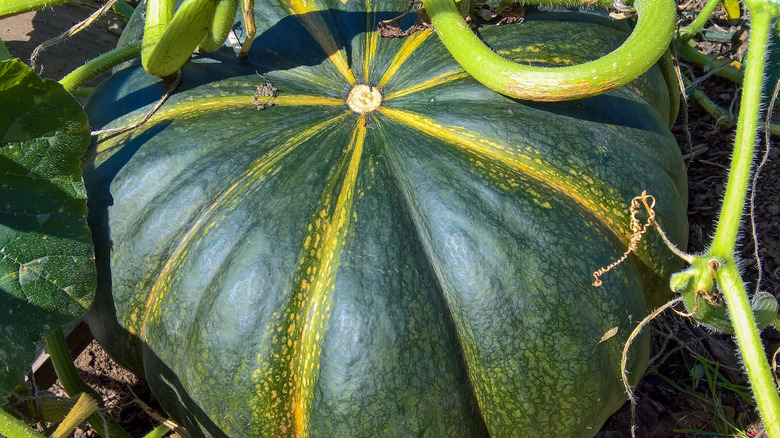8 Winter Squash Varieties To Grow For The Best Fall Harvest
It's hard to beat the cozy feeling radiating from a warm bowl of butternut squash soup, but what if you want more variety in your fall menu and the satisfaction of trying something new in your vegetable garden? Luckily, many types of winter squash can be grown at home for a plentiful fall harvest, including kabocha, spaghetti, and calabaza squashes.
The particulars of when to plant and harvest your winter squash will vary depending on where you garden. In much of the United States, they are planted in the summer and enjoyed throughout the fall and winter (thanks to thick rinds, allowing them to be stored for months at a time), but in southern states, such as Florida, they're planted in the cooler months due to the overwhelming summer heat there.
You can either sow winter squash seeds directly in the ground or start the seeds indoors before transferring them to the garden. Many gardeners plant a few seeds together in hills. Once planted, many types will need pollination to produce fruit. Growing flowers nearby to lure in bees may help with this, but if you don't have enough insects in range, a cotton swab is a staple you'll want to keep on hand when you're growing squash. You can transfer the pollen between the "male" and "female" flowers with this tool. It's also important to note that most winter squash aren't the best fit for small gardens. They need to be planted 3 to 4 feet apart so they can sprawl their vines out, and rotating them each year helps keep the crop healthy. The good news is that once their vines are blanketing your garden, winter squash are generally easy to care for. When the fruit has developed a hard rind and a deep color, it's time to pick them and store the squash to use in many delicious recipes.
Acorn
Planting acorn squash (Cucurbita pepo var. turbinata) is likely to give you a bountiful harvest because it's known to grow prolifically. Native to North America, this plant thrives outdoors in USDA Hardiness Zones 3 through 11. The dark green or orange squash is ridged and has yellow flesh inside with a sweet, nutty flavor. Whether the thick rind of an acorn squash is palatable varies, but all types have edible seeds. If you don't have much space in the garden, try growing a bush variety like the 'Table King' cultivar, which grows more compactly and produces smaller squash.
Buttercup
A buttercup squash (Cucurbita maxima) plant can spread out on the ground or climb a trellis, but either way it grows aggressively in zones 3 through 11. The plant puts out dark green squashes with a rounded shape and orange flesh. When they're ready to pick, they develop light white stripes, and the yellow patches you'll see when they're growing will fade out. Sometimes, the squash sport a cap that resembles a turban. The ripe squash are typically between 3 and 5 pounds, but they're 1 to 1 ½ pounds on the compact 'Gold Nugget' cultivar.
Delicata
Delicata squash (Cucurbita pepo var. delicata) is well-known for its sweet taste. It's sometimes called the sweet potato or peanut squash, but the name "delicata" hints at the delicate nature of its thin, edible skin. The plants grow well in zones 8 through 10, producing a plentiful harvest of yellow or cream-colored oblong squash with dark green stripes. Be aware that these types of squash are at risk of developing powdery mildew. If you notice a grayish-white color forming on the leaves, it means the squash plants in your garden need to be pruned.
Kabocha
Grow kabocha squash (Cucurbita maxima) on the ground or vertically on a trellis in zones 4 through 11. Their medium-sized fruits are dark green on the outside, but varieties like 'Sunshine Kabocha' are a vibrant red-orange color. After their fruits set, they should be ready to pick in about 50 days, or when the rind is so tough you can't push through it and the stem is light brown and woody. Check for these signs to avoid harvesting too early, a common mistake gardeners make when planting squash. Kabocha is the best squash to store, because its flesh gets sweeter over time.
Spaghetti
Your weeknight dinners will be a lot more interesting if you grow and harvest spaghetti squash (Cucurbita pepo var. pepo), a doable effort, as it is one of the easiest types of squash to grow. The plant is also a good candidate for climbing on a trellis — the vines benefit from some support since the fruit can get heavy. If all goes well, expect to harvest these oblong yellow squash in approximately 100 days from the time seeds are planted. Although you can't eat the rind, the flesh inside is stringy and nutty. They're hardy for gardens in zones 2 through 11.
Butternut
A classic for a reason, butternut squash (Cucurbita moschata) plant is a favorite to grow because of the sweet and nutty taste of its orange or tan, bottle-shaped fruits. It's worth waiting out its growing season, which is longer than other types of squash. The fruits, grown in zones 3 through 11, have a hard exterior, a swollen base, and seeds that can be roasted for a snack. Growing butternut squash has its benefits: They're resistant to a common pest called the squash vine borer, and they are the type of winter squash that lasts a while when stored.
Red kuri
If you love the look of pumpkins, consider growing red kuri squash (Cucurbita maxima). This vivid orange type of Hubbard squash has a teardrop shape and light orange flesh. You can harvest it in zones 3 through 10, even in places with a short growing season. Fortunately, red kuri has some resistance to cucumber beetles. The squash, weighing 3 to 4 pounds, is on the small side; however, the vining plant will need plenty of space to spread out or structures to climb. Home cooks enjoy the creamy texture of its flesh and the notes of chestnut flavor it provides.
Calabaza
Try growing calabaza squash (Cucurbita moschata), also known as tropical pumpkin, if you live in a warmer climate. Although they grow in zones 3 through 10, cold evening temperatures can harm the plant. Just like pumpkins, they need cross-pollination to develop fruit. Set them up for success by planting flowers that attract bees and other insects. Also, ensure there's plenty of space between your seeds or starter plants so the fruits can reach their maximum size. When they're fully grown, the round or pear-shaped squash are light orange or green, and you can enjoy a sweet and mild flavor reminiscent of butternut squash.
